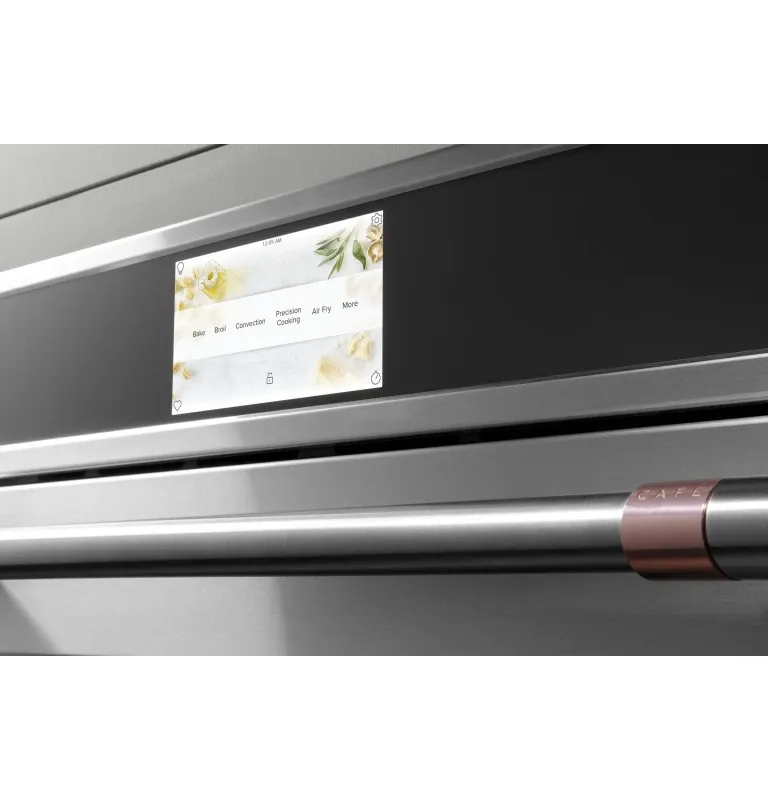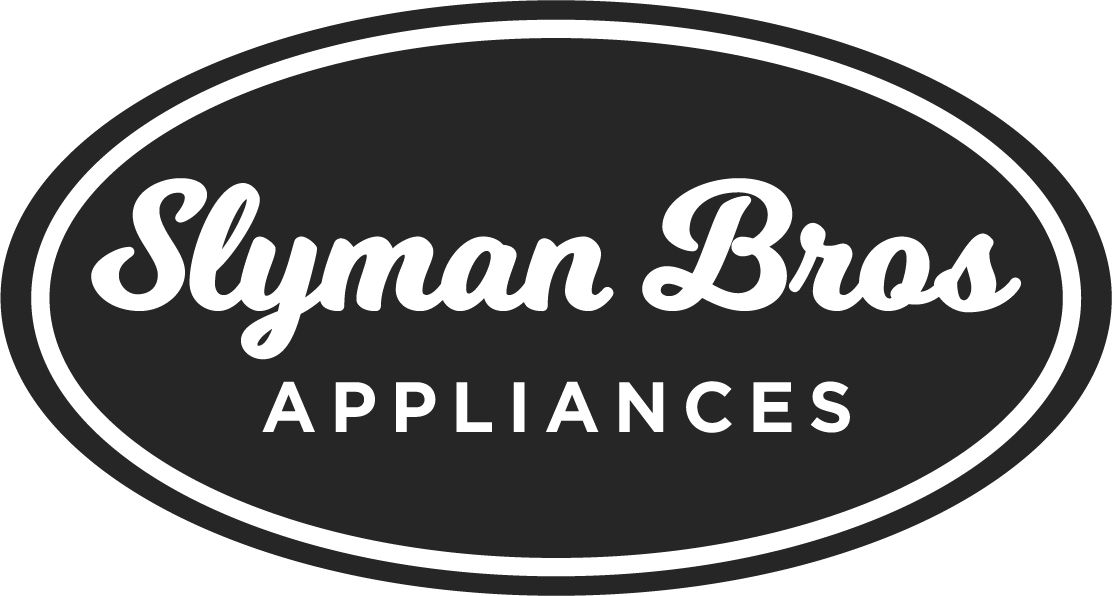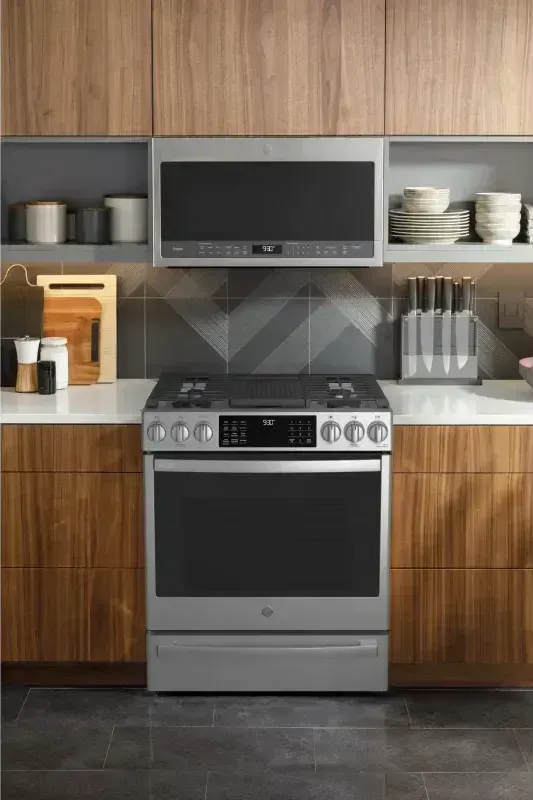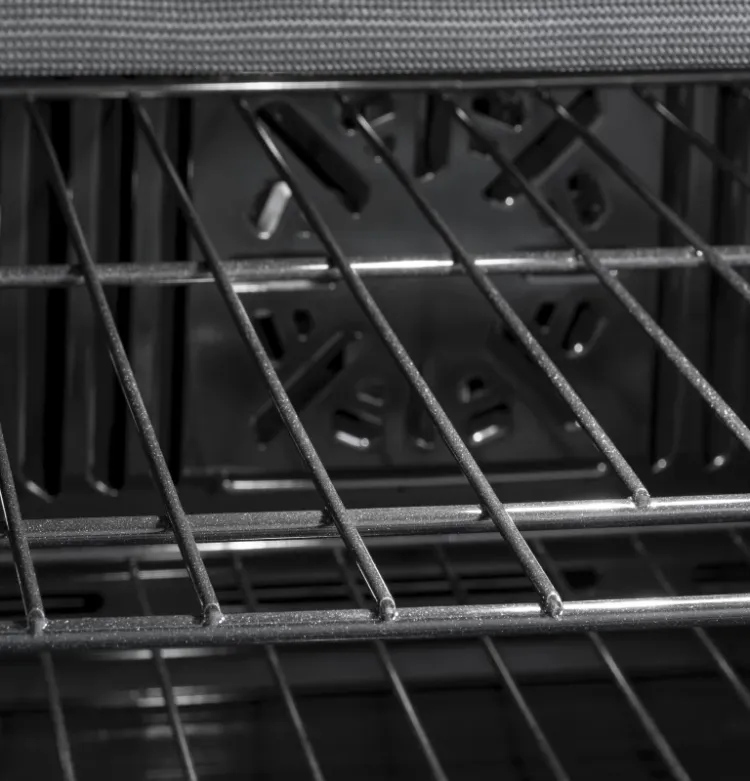How to Preheat an Oven: The Simple Tutorial You Need

Preheating an oven is a fundamental step when it comes to baking and cooking. It sets the stage for culinary success. So whether you're about to embark on your first baking adventure or are honing your skills in the kitchen, understanding how to preheat an oven correctly is crucial. This process helps ensure that your food cooks evenly and achieves the textures and flavors you desire. In this guide, we've designed it with beginners in mind, we'll walk you through the steps of how to preheat an oven, covering it all for both electric and gas models.
You'll learn about the importance of temperature accuracy, how an oven thermometer can be your best friend in the kitchen, and why even heat distribution is key to avoiding cold spots and achieving that perfect bake. Let's simplify the process and make your entry into the world of baking and cooking as smooth and enjoyable as possible.
Understanding Oven Preheating
Preheating an oven might seem like a simple step, but it plays a pivotal role for both baking and cooking. To understand its true importance, let's break down what preheating is and explore the science behind how it affects your culinary creations.
What is Preheating?
It's the process of turning your oven on and allowing it to reach a specific temperature before placing your food inside. This step ensures that your oven is at the right temperature for cooking or baking right from the start.
Electric vs. Gas Ovens
Whether you have an electric oven or a gas oven, the process remains the same. However, the time it takes to preheat can vary between models. Electric ovens, for instance, might take a bit longer to reach the desired temperature compared to gas ovens.
Why It's Essential to Preheat
1. Even Heat Distribution: Preheating allows your oven to reach a temperature where heat is distributed evenly. This is crucial for cooking and baking because it ensures that all parts of your dish are heated at the same rate, eliminating any cold spots.
2. Optimal Cooking and Baking Conditions: Many recipes, especially those involving baking, are designed with preheating in mind. Placing food in a cold oven can lead to undercooked, unevenly cooked, or even overly dense results.
3. Kitchen Safety: It reduces the risk of thermal shock to your dishes and cookware, making it a key aspect of kitchen safety. Thermal shock is the process where different pots and pans like those made of glass or even ceramic, expand and contract due to sudden changes in temperature.
The Science Behind Preheating and Baking
When it comes to baking, the role of preheating is even more critical due to the science involved with leavening agents like baking powder.
- Leavening Agents: Baking powder and other leavening agents start reacting the moment they are exposed to heat. They start producing gases that cause dough or batter to rise. If the oven isn't preheated, these reactions won't happen at the intended rate or consistency, affecting the texture and rise of your baked goods.
- High-Altitude Baking: At high altitudes, the lower air pressure can further impact how leavening agents work, making an accurate target temperature from the start is even more essential to compensate for these differences.
- Airflow in Ovens: Proper preheating also ensures that the airflow is at its optimal state. This contributes to even heat distribution and reduces the likelihood of uneven baking or the formation of cold spots with whatever you are baking.
Understanding the importance of preheating and the science behind it illuminates why this step is not just a recommendation but a necessity for anyone looking to achieve the best possible results in their baking and cooking endeavors.
Step-by-Step Guide to Preheat Your Oven
Preheating your oven is the first step in a successful cooking or baking session. Here's a comprehensive guide on how to effectively preheat both electric and gas ovens, along with tips for those living in high-altitude areas.
For Electric Ovens
1. Setting the Temperature:
Locate the temperature dial or digital control panel on your oven.
Select the desired temperature as indicated in your recipe. For baking, the common temperatures range from 325°F to 450°F (163°C to 232°C).
2. Understanding the Preheat Signal:
Most electric ovens feature a signal, such as a light or a beep, indicating when the oven has reached the pre-set temperature.
Wait for this signal before placing your dish inside to ensure everything is adequately preheated.
3. Using an Oven Thermometer:
Even with modern ovens, the internal temperature can vary. An oven thermometer can help you verify that your oven reaches the correct temperature.
Place the thermometer in your oven before you start preheating to get an accurate reading once the preheat signal goes off.
For Gas Ovens
1. Proper Ventilation:
Ensure your kitchen is well-ventilated when using a gas oven, as they produce combustion gases that need to be vented out.
2. Lighting the Pilot Light and Setting the Temperature:
If your gas oven has a manual pilot light, light it according to the manufacturer's instructions.
Set the desired temperature using the control knob, similar to an electric option.
3. Airflow Differences:
- Gas ovens may experience more variance in temperature and airflow compared to electric ones. This can lead to hot spots, so rotating your dish halfway through cooking or baking is often recommended.
When You're at High Altitudes
Temperature and Time Adjustments:
High altitude can affect the way your oven heats and how baked goods rise. You may need to increase the internal temperature by 15°F to 25°F (8°C to 14°C) and decrease baking time slightly.
Consult a high-altitude baking guide or adjust recipes based on experience for best results.
Preheating properly, whether it's electric or gas, is a critical step in the cooking and baking process. It ensures that your food cooks at the right temperature for the specified time, leading to more consistent and delicious results.
Determining the Right Oven Temperature
Selecting the right oven temperature is a key factor in achieving perfect outcomes in the kitchen. Whether you're baking bread, whipping up a batch of cookies, or preparing a casserole, understanding how to set your oven properly is essential. Let's explore how to determine the appropriate temperature for these everyday tasks.
Setting Your Oven for Common Tasks:
1. Baking Bread:
- Most bread recipes require a hot oven to ensure a good rise and a crusty exterior. Temperatures typically range from 375°F to 425°F (190°C to 218°C).
- Preheat on the higher end of this range for bread with a crispier crust.
2. Baking Cookies:
- Cookies usually bake well at moderate temperatures, around 350°F to 375°F (177°C to 190°C).
- This temperature range helps cookies bake evenly, allowing them to develop the right balance of chewy centers and crisp edges.
3. Casseroles:
- Casseroles are often baked at 350°F to 375°F (177°C to 190°C), similar to cookies.
- At these temperatures, the casserole can cook thoroughly without burning the top or edges.
The Role of the Oven Thermometer: Achieving Consistent Results
An oven thermometer is more than just a tool, it's your ally in the kitchen for ensuring every dish comes out as intended. The accuracy of oven thermostats varies, and over time, they can become less reliable, causing the temperature inside your oven to differ from what you've set. This can lead to undercooked or even overcooked meals, affecting both the taste and texture of your food. Here's how an oven thermometer can help you achieve consistent and desirable baking and cooking results:
1. Accurate Temperature Readings:
An oven thermometer gives you a true reading of its internal temperature. This accuracy is important for recipes that require precise temperatures, such as delicate pastries or meats that need to be cooked to a specific doneness.
2. Adjusting the Settings:
With the actual temperature known, you can adjust your oven's settings if necessary. If your oven runs hot or cold, you can set the dial higher or lower than the recipe suggests, ensuring that the internal environment matches the recipe's requirements.
3. Monitoring Temperature Fluctuations:
Ovens can fluctuate in temperature during the cooking process, especially older models or those that are frequently opened. A thermometer allows you to monitor these fluctuations, making it easier to adjust the temperature or cooking time as needed.
4. Improving Recipe Outcomes:
Consistent use of a thermometer can dramatically improve the outcome of your recipes. It helps in troubleshooting common baking problems, such as unevenly baked goods, and ensures that everything from roasts to casseroles is cooked to perfection.
5. Enhancing Kitchen Safety:
By preventing undercooking, especially in meats and poultry, an oven thermometer ensures that all foods reach a safe internal temperature to avoid any foodborne illnesses.
Troubleshooting Common Issues When You Preheat
Even with the best practices, you might encounter issues when you go to preheat. Understanding how to troubleshoot these problems can save your dish and ensure your cooking is at its best. Let's explore some common preheating issues and how to address them effectively.
When Your Oven Doesn't Signal It's Preheated
Manual Check
If your oven doesn't beep or indicate that it's preheated, use an oven thermometer to manually check the temperature. Wait a few minutes beyond your estimated preheat time, then check the thermometer to see if the desired temperature has been reached.
Service and Maintenance
Lack of a preheat signal could indicate a need for maintenance. Check your oven's manual for troubleshooting tips or consider calling a professional to make sure your oven's signaling features are working correctly.
Adjusting Cooking Times for Slow or Quick Preheating
Slow Preheating
Ovens that take longer to preheat may require you to adjust the cooking time slightly to compensate. If you notice yours consistently preheats slowly, consider adding a buffer to your preheat time before adding your food. However, keep the original cooking time unless you notice consistent undercooking, as the total cooking time might still be adequate.
Quick Preheating
If your oven preheats quicker than expected, it's essential not to shorten the cooking time too much. Instead, use an oven thermometer to ensure the accuracy of the preheat temperature and adjust as necessary based on the results rather than the preheat speed.
Knowing Its Quirks
Learning Curve
Every model has its unique characteristics or "quirks." Spend time getting to know how your oven behaves by noting how it heats, how long it takes to heat, any temperature fluctuations, and how all these factors affect how each of your dishes turn out.
Adapting
Once you understand its tendencies, you can implement your cooking and baking strategies. This might mean rotating pans to avoid cold spots, adjusting the rack position for even cooking, or tweaking temperatures and times based on your oven's performance.
Consistent Monitoring
Regularly using a thermometer can help you keep tabs on any changes in your oven's heating efficiency and accuracy. By monitoring and adapting, you can ensure consistent results despite any issues your oven may have.
Troubleshooting common preheating issues requires patience and a bit of detective work. By understanding the potential problems and how to address them, you'll be better equipped to handle whatever your oven throws your way.
Tips and Tricks When You Preheat
Mastering the preheating process not only ensures better cooking and baking outcomes but also enhances kitchen safety. Here are some tips and tricks to help you preheat your oven more effectively and safely.
Utilizing the Broil Setting for a Quicker Preheat
- Quick Start:
If you're pressed for time, using the broil setting can speed up the preheating process. The broil element is typically more powerful than the bake element, allowing the oven to reach the desired temperature more quickly.
- Switch to Bake:
Once your oven has reached the preheating temperature using the broil setting, remember to switch it back to bake before placing your dish inside. This ensures even cooking and prevents the top of your dish from burning. Broiling is also great for getting that crispy top you might be looking for from your dish.
Safety Tips for Preheating
Preheating your oven safely is just as important as achieving the right temperature. Here are some safety tips to keep in mind, especially if you are using glass dishes:
- Thermal Shock: Glass dishes are prone to breaking if subjected to sudden temperature changes—a phenomenon known as thermal shock. To prevent this, avoid placing cold glass bakeware directly into a hot oven. Either allow the dish to come to room temperature first or place it in the oven before you start preheating.
- Gradual Temperature Increase: When using glass dishes, consider increasing the oven temperature gradually if possible. This helps reduce the risk of thermal shock and will help ensure the longevity of your bakeware.
- Avoiding Direct Heat: Placing glass bakeware directly on the rack allows air to circulate evenly. However, be cautious of using settings like broil with glass dishes, as the direct intense heat can increase the risk of thermal shock.
- Checking for Oven-Safe Labels: Always check whether your glassware is oven-safe. Most oven-safe dishes are labeled as such and come with temperature limits. Following these guidelines helps prevent accidents and ensures the safety of your dishes and food.
Preheating your oven properly and safely can make a significant difference in your cooking and baking endeavors. By using these tips and tricks, you can save time, enhance the quality of your dishes, and ensure a safe cooking environment.
The Importance of Preheating
Preheating is often overlooked, but it's so important to make sure your food comes out perfect. Understanding the full scope of preheating's importance will ensure your efforts in the kitchen are well rewarded.
Effects on Food Texture and Cooking Times
- Undercooked or Overcooked Food: Without preheating, your oven is not at the correct temperature when your food goes in. This can lead to longer cooking times than the recipe calls for, and even then, parts of your dish may end up undercooked while others overcooked.
- Poor Texture: When baking, the right beginning temperature is critical for the texture of goods. For instance, yeast breads might not rise properly, and cakes could end up dense rather than fluffy. The initial heat activates leavening agents like yeast or baking powder, so starting at a lower temperature disrupts this process.
- Inconsistent Results: Repeating a recipe without preheating your oven can yield vastly different outcomes each time, making it difficult to perfect your dishes or bake with consistency.
Ensuring Even Heat Distribution and the Elimination of Cold Spots
Achieving Uniform Cooking
Preheating your oven helps to stabilize its internal environment, ensuring that heat is evenly distributed by the time you start cooking. This is essential for baking and roasting, where even exposure to heat can mean the difference between success and a culinary mishap.
Eliminating Cold Spots
Ovens can have areas that are cooler than others, known as cold spots. Preheating gives you the time it needs to circulate hot air and minimize these temperature disparities, ensuring that food cooks evenly from all sides.
Optimal Use of Oven Settings
Utilizing specific oven settings, like fan-assisted or convection modes during preheating, can further enhance air circulation and heat distribution, effectively eliminating cold spots and promoting uniform cooking.
Now You're an Expert When it Comes to How to Preheat
Preheating your oven is a simple yet crucial step in the culinary process, one that sets the stage for cooking and baking success. Skipping this step can lead to uneven cooking, underwhelming textures, and extended cooking times—issues easily avoided with a bit of patience and preparation.
Remember, preheating your oven can significantly impact the outcome of your dishes, whether you're baking bread, cookies, casseroles, or preparing any number of delicious recipes. By allowing your oven to reach the desired temperature before you begin, you're ensuring that your efforts in the kitchen lead to consistently delicious and satisfying results.


